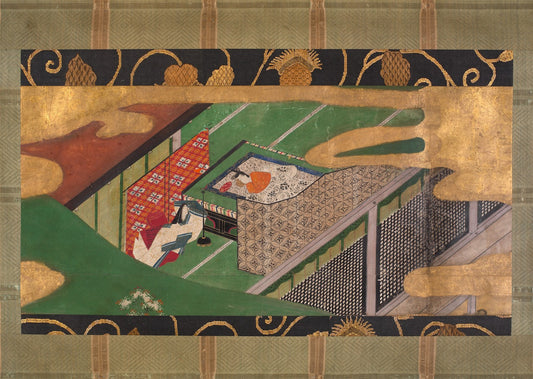Rembrandt's 'Night Watch' is put in place at the Rijksmuseum during 'Operation Night Watch.' Remko de Waal/ANP/AFP via Getty Images via Smithsonian Magazine
Art and True Crime - the murder mystery unfolded from Rembrandt’s paintings
"The Night Watch" (1642) is one of Rembrandt’s most famous paintings, formally titled "Militia Company of District II under the Command of Captain Frans Banning Cocq." However, the standard and current name, "The Night Watch," emerged from restoration discourse about darkened varnish. Restoration experts misinterpreted the darkened varnish on the painting as an intentional design. While the initial painting still took on a darker palette filled with deep browns and greens, cleaning the artwork of centuries of dust and discoloration revealed that this “night watch” occurred in the daytime.
However, by uncovering the painting from beneath the varnish, the baroque work holds multiple interpretations. These interpretations range from the work’s esteemed place among its contemporaries to Rembrandt’s possible subversive commentary on the politics of Amsterdam’s militia, who were the patrons of this very work.

Background
Captain Bannick Coque and his civic militia, known as the Kloveniers, commissioned Rembrandt to paint the work in 1639. The painting included all 18 militia members, who paid Rembrandt about 100 guilders each to be included in the final work. Rembrandt completed the work during the Baroque era, but it’s also considered a work indicative of the Dutch Golden Age. The Baroque era is characterized by ornate grandiosity in response to cultural and artistic restraint after the European Renaissance. Today, the era is commonly remembered for its emotional intensity, emphasizing light and shadow and alluring its viewers.

Rembrandt is considered one of the greatest visual artists in the world. While he was also a printmaker, he was most renowned for his portraiture, producing over three hundred paintings and upwards of two thousand drawings during his career. The Dutch painter was famous for using chiaroscuro, mastery of light and shadow transcending the canvas, and innovating portraiture for centuries. His reputation attracted militias, among many others, to commission him to immortalize their status, achievement, and position. However, while typical militia portraits depicted the soldiers standing front and center or at a banquet, Rembrandt chose to illustrate the company wearing their full gear, as if they were just moments away from the battle. This approach gave a more candid feel to an otherwise static, rigid portrait style. Critics perceived this approach as a humorous take on the standard portrait; some even found it offensive. However, the work was a turning point in how people sought to be remembered. Those with status could immortalize themselves as a stoic figure with a statuesque face, focusing on their appearance, or instead use the canvas to preserve who they were and what they did.
Controversies within Change
Even though there isn't any murder mystery directly associated with "The Night Watch," there has been speculation and debate about the painting’s interpretation being a moment of action and movement rather than a static one. This change is essential because it would mark a direct departure from traditional group portraits of the time, making this Rembrandt piece incredibly groundbreaking and innovative. However, Rembrandt’s choices in the painting sparked many controversies regarding his intentions when depicting these esteemed historical figures.

As discussed before, portraiture is a space to immortalize identities within museums and history books. However, an artist’s intention sometimes shines through the layers of oil paint. ArtNews reported the thoughts of filmmaker Peter Greenway, who highlighted satirical and sinister notes at play within the militia’s positioning in the final painting. Greenway highlights how The Night Watch accuses this militia of corruption, prostitution, and a devious murder plot to elevate the company’s status.
Tumultuous restoration
As if to fuel the flames of speculation surrounding Rembrandt’s painting of the brigade killing their way to the top, the painting itself has a tumultuous history of someone trying to “kill” it. Restoration and cleaning experts were working on the artwork when an assailant stabbed and slashed at it with a knife. In 1975, a man slashed its canvas with a bread knife as he shouted to passersby that he “did it for the Lord.” The painting received over a dozen slashes, and of all the spaces to receive gashes on the artwork, the Captain’s image had the most damage, sporting a 12-inch hole where his leg used to be.


As later restoration efforts sought to repair the damage and maintain the integrity of Rembrandt's original work, changes in the varnish over time have led to different interpretations of the painting's colors and details. The mission to save such a beloved Dutch painting resulted in experts digging deeper into the color and placement of the figures. While the focus was restoration, many began to speculate about why Rembrandt chose such dark contrasts throughout the artwork and why the men were dressed so casually.
This painting is rich—not just within art history, where techniques were used to shape how artists and historians perceived portraiture for years to come, but also for its historical connotations. Scholars have posited that Rembrandt suggested the militiamen guilty of treachery, corruption, and murder. Its history in restoration is just as rocky, with the knife that sliced the canvas echoing the shadowy hints of violence in the painting itself. However, it is essential to note that many of these theories are simply interpretations based on artistic analysis and historical context. We may never know what happened with this Dutch Militia, but the painting reminds us that humans are intrigued by mysteries—even ones almost 400 years in the past.
©ArtRKL™️ LLC 2021-2024. All rights reserved. This material may not be published, broadcast, rewritten or redistributed. ArtRKL™️ and its underscore design indicate trademarks of ArtRKL™️ LLC and its subsidiaries.





